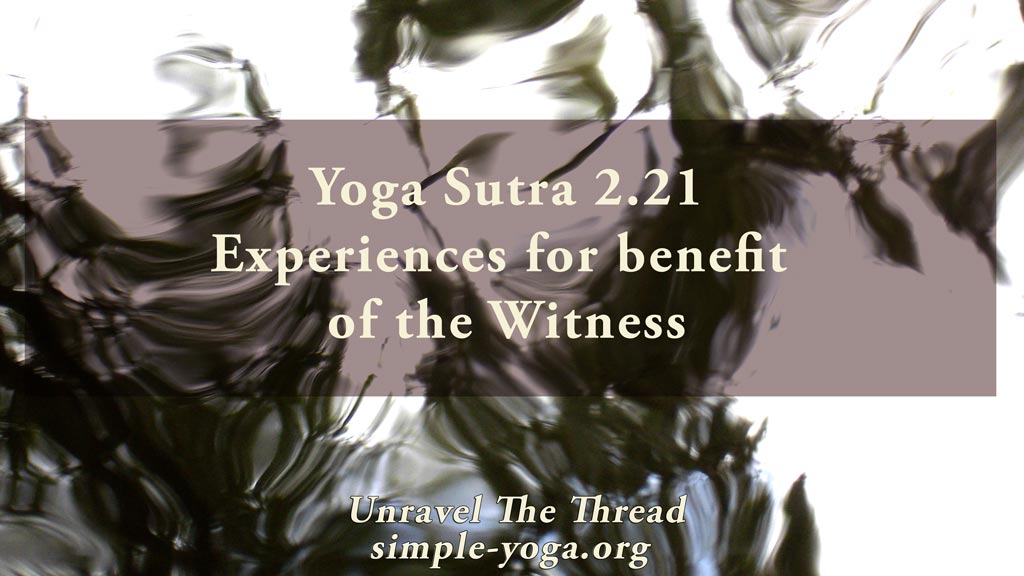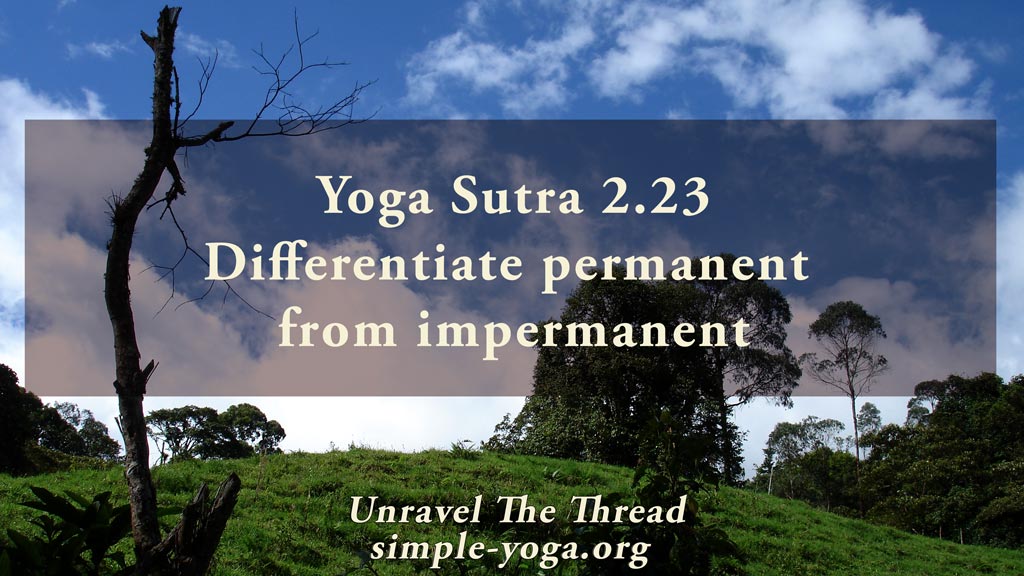2.22 The world is real

2.22 Although worldly experiences do not exist any longer for the yogi who has reached liberation, the world remains. The world is real.
In the tradition of philosophy that yoga belongs to, there are competing views on the world. Some schools maintain that the world is real and that it can be apprehended by our senses, just as it is. Other perspectives propose that the world is an illusion, pervaded by a fundamental unchanging oneness manifesting as all that there is. Still other approaches indicate that everything consists of momentary impressions that keep changing with only emptiness underlying all of existence. Each one of these options suggests a different path of action. For instance, if you see the world as a very convincing illusion under which hides true reality, your path may require you to discard everything that you experience as an illusion keeping you from experiencing the underlying reality. If emptiness is all that there is, then your focus may be on the temporariness of all internal and external phenomena.
This sutra states that the world of experience is real, it is not something to be denied. In other words, life and consciousness coexist, with life offering experiences for the benefit of consciousness. As the previous verse suggested, life is a vehicle for awareness. Individual awareness can either identify with the fleeting experiences (1.4) or it can abide in its own true nature (1.3), consciousness. Anything that can be experienced is not an illusion or the product of your imagination. It is real. Yet it is impermanent; it does not last. All experiences serve the purpose of providing liberation for awareness. The yogi is the person who has chosen to abide in awareness by liberating from their attachments to experiences. Therefore, the world, although real, does not entice the yogi any longer to identify with the temporary comings and goings of experience. In other words, the yogini participates in the world without taking it personally, doing her duty without expectations or attachments. As you try to practice this sutra consider What are the experiences that capture your attention? What aspects of life define who you are? Is there something that you previously identified with, but that no longer seems to define you? How do you see the world, your experiences and your own awareness? What are the relationships between these three ideas? How do your views influence your thoughts, emotions, actions and interactions?
As usual, one more way of exploring the meaning of this sutra is by chanting it.
You can choose to chant it in its traditional form with some of the words coming together:
2.22 kṛtārthaṃ pratinaṣṭaṃpyanaṣṭaṃ tadanya sādhāraṇatvāt
कृतार्थं प्रतिनष्टंप्यनष्टं तदन्य साधारणत्वात् ॥२२॥
Another option is to chant each word in the sutra individually:
- kṛta
- arthaṃ
- prati
- naṣṭaṃ
- api
- anaṣṭaṃ
- tat
- anya
- sādhāraṇatvāt
If you prefer, you may listen to the podcast:
Unravel the thread is now available as a book!
If you find Simple-Yoga.org and Unravel the thread useful, consider supporting my labor with a donation, you may also donate using PayPal or Venmo. Thank you!


